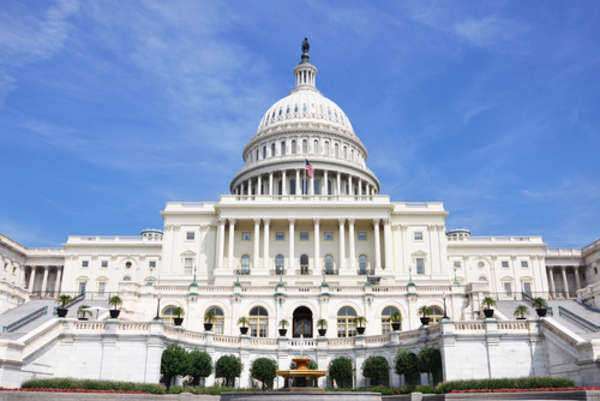Quick Guide to The Election and Composition of the Senate

The Senate is the upper chamber of the United States Congress, which is composed of 100 Senators, two from each state. Established by the United States Constitution in 1789, the Senate holds significant power in the country’s political system and has been instrumental in shaping the legal landscape of the United States. Over the years, the Senate has been involved in numerous high-profile cases, including impeachment proceedings and some of the most contentious confirmations of Supreme Court Justices in U.S. history.
In this article, we’ll explore the history of the Senate and how it has impacted U.S. politics as well as the legal system. We’ll take a closer look at the most important facts about the Senate and highlight the ways in which it has helped shape the country.
- The Senate is One Half of the U.S Congress
The United States Congress comprises two parts: the Senate and the House of Representatives. The Senate serves as the upper chamber of the Congress, while the House of Representatives is the lower chamber. Together, they are responsible for passing legislation that is meant to shape the future of the United States.
- Senators Reside in Washington D.C.
Senators are required to live in Washington D.C. while Congress is in session. They are allowed to maintain a home in their home state, but the vast majority choose to live in the Washington D.C. area so they can remain close to their colleagues while they conduct business.
- Senate Terms Last Six Years
Unlike the House of Representatives, Senators are elected for six-year terms. This is intended to provide more stability in the upper chamber so that Senators can focus more on long-term policy goals and less on the short-term political considerations that can influence the House.
- The Senate Has Exclusive Power Over Impeachment
The United States Constitution gives the Senate the exclusive power to conduct impeachment proceedings against federal officials, including the president. If the House of Representatives votes to impeach an official, the Senate then holds a trial to determine whether to remove the official from office.
- The Senate Conducts Confirmation Hearings for Supreme Court Justices
Whenever there is a vacancy on the Supreme Court, the Senate conducts confirmation hearings to make sure that the nominee is qualified and able to serve on the Court. These hearings have sometimes become controversial, especially when the political party controlling the Senate is opposed to the nominee.
- The Senate Has the Power to Ratify Treaties
The Senate has the power to ratify treaties made by the President of the United States. This is meant to provide a check on the president’s power so that the executive branch doesn’t overstep its bounds in dealing with foreign governments.
- The Senate Approves Presidential Appointments
The Senate has the power to approve many of the president’s appointments, including cabinet members, executive branch officials, and federal judges. This check on the president’s power is meant to ensure that all government officials are qualified and able to serve the American people.
- The Senate Majority Leader is the Most Powerful Senator
The Senate Majority Leader is one of the most powerful people in the United States government. This person determines the Senate’s agenda and controls the flow of legislation, making it easier for the party in power to get their agenda passed.
- The Senate Has the Ability to Filibuster Legislation
The Senate’s rules allow for a filibuster, which is a tactic used by Senators to delay or prevent legislation from being passed. This requires a supermajority of 60 Senators to break, and is often used by the minority party to prevent the majority from passing legislation they don’t agree with.
- The Senate Has a Long History of Controversy
The Senate has been involved in numerous controversies over the course of its history, including the McCarthy hearings and the 2005 “nuclear option” controversy. These controversies serve as reminders of the Senate’s significant power and the importance of the American people staying informed about the actions of their elected representatives.
The Senate has played a critical role in shaping the United States’ political and legal landscape. Its members are tasked with representing the interests of their states and the country as a whole, and its actions can have significant impacts on American policy and society. Whether it is conducting impeachment proceedings, confirming Supreme Court Justices, or overseeing government appointments, the Senate is an essential part of American governance. As such, it is important to stay informed about its activities and to hold its members accountable for their actions.
The United States Constitution details the election process and the composition of the upper house of Congress, the United States Senate. The Constitution originally provided for Senators to be elected by the state legislatures. However, this would late be changed to allow for Senators to be elected by popular vote with the implementation of the Seventeenth Amendment Classification, Qualification, and Filling of Vacancies for Senators Vice President’s Role as Senate President.
In the United States Senate, there is a system of seniority in place that allows for certain benefits and perks for members who have served for a long period of time in their Congressional office. The practice of seniority is not one that is granted in the Constitution, but it also does not entail any particular extension of authority or power to more senior members.
Generally speaking, seniority acts as a basis for recognition for those that have served the Senate for an extended period of time. Senior Senators will typically be given priority when committee appointments are to be made, giving them the choice of where they would like to be. The Seniority system in the Senate is based upon several factors that help determine where Senators rank.
Time served to be the highest factor and most considered, other factors may take precedence when Senators have served the same amount of time in their positions, thus providing for the appropriate rank.




















